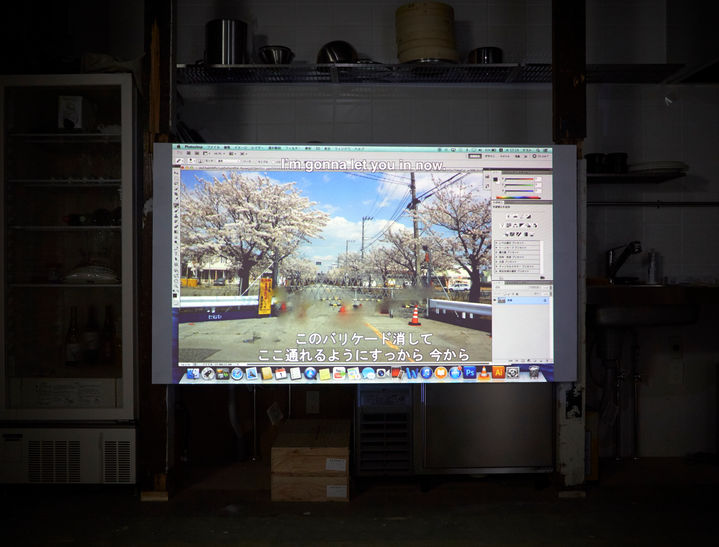
The Story of Making Lies
The Story of Making Lies
2015
Video
I met many elderly men and women who could no longer return to their hometowns due to the nuclear accident. One elderly man laughed and said, "I guess I'll never be able to go back to my hometown again."
I decided to create "lies" with them. A world without barricades, an open road to their hometown, cherry blossom trees free from radiation worries. Imagining such scenes, I used Photoshop to erase the barricades with them.
*Photoshop: an image editing software.
ウソをつくった話
2015
映像
原発事故で故郷に帰れなくなったお爺さんやお婆さんとたくさん出会った。
あるお爺さんは、「もう二度と故郷には帰れないだろうな」と笑った。
私は彼らと一緒に「ウソ」を作ろうと思った。バリケードのない世界、故郷の道が開けた風景、放射能の心配のない桜並木。そんな光景を想像しながら、私は彼らと一緒にフォトショップでバリケードを消していった。
※フォトショップ=画像処理ソフト
This video work was created together with people affected by the nuclear disaster caused by the Great East Japan Earthquake in 2011.
In areas contaminated by radioactive materials, barricades were set up to block entry, and many people were no longer able to return to their hometowns. The artist photographed these barricades and, together with people who had to evacuate their homes, used image-editing software (Photoshop) to attempt to erase the barricades from the photographs.
The video shows the awkward process of erasing the barricades and the conversations that unfold around it. This act not only invites viewers to imagine what lies beyond the invisible barriers, but also brings to light the complex emotions of those who lost their homes.
この作品は、2011年に起きた東日本大震災による原発事故の被災者と共に制作された映像作品である。
原発事故の影響で放射性物質に汚染された地域はバリケードで封鎖され、多くの人が故郷に戻れなくなった。作者はそのバリケードの写真を撮影し、故郷に帰れなくなった人々とともに、画像編集ソフト(Photoshop)を使ってバリケードを消す試みを行った。
映像には、不器用に消されていくバリケードと、それにまつわる会話が映し出される。この行為は、見えなくされたバリケードの向こう側を想像させると同時に、故郷を奪われた人々の複雑な感情を浮かび上がらせていく。







